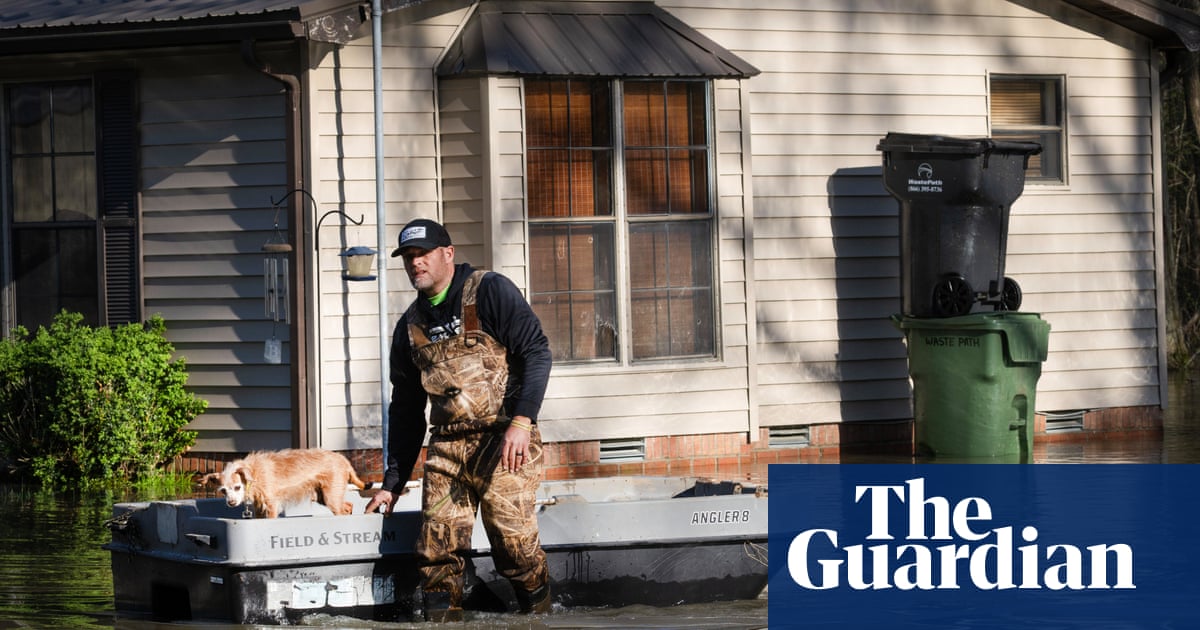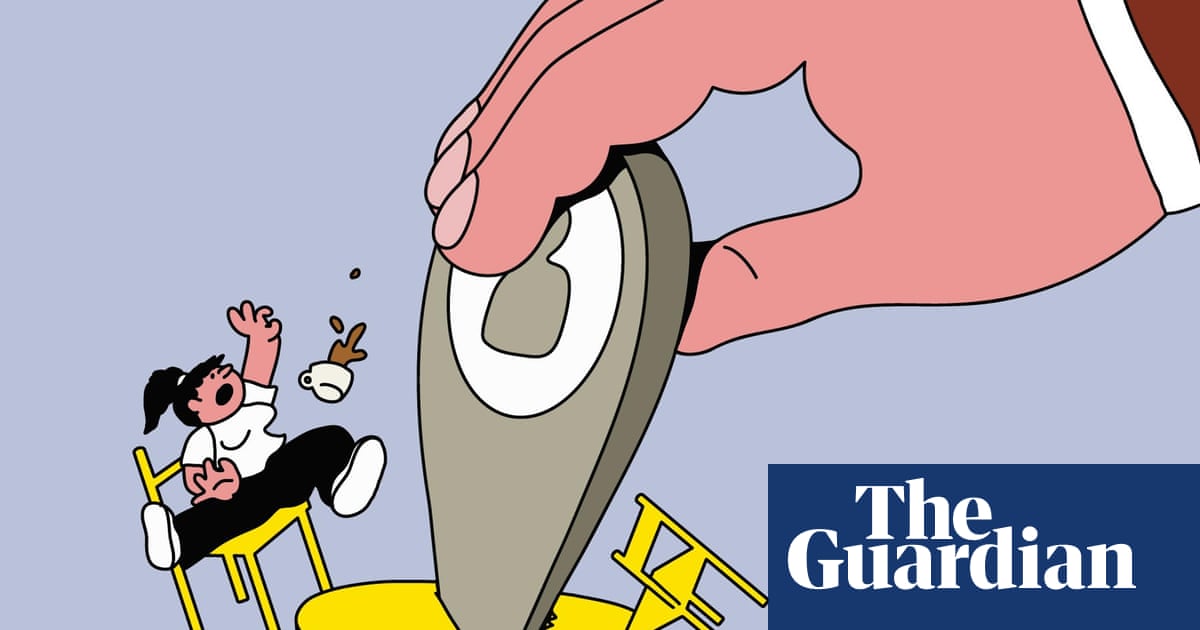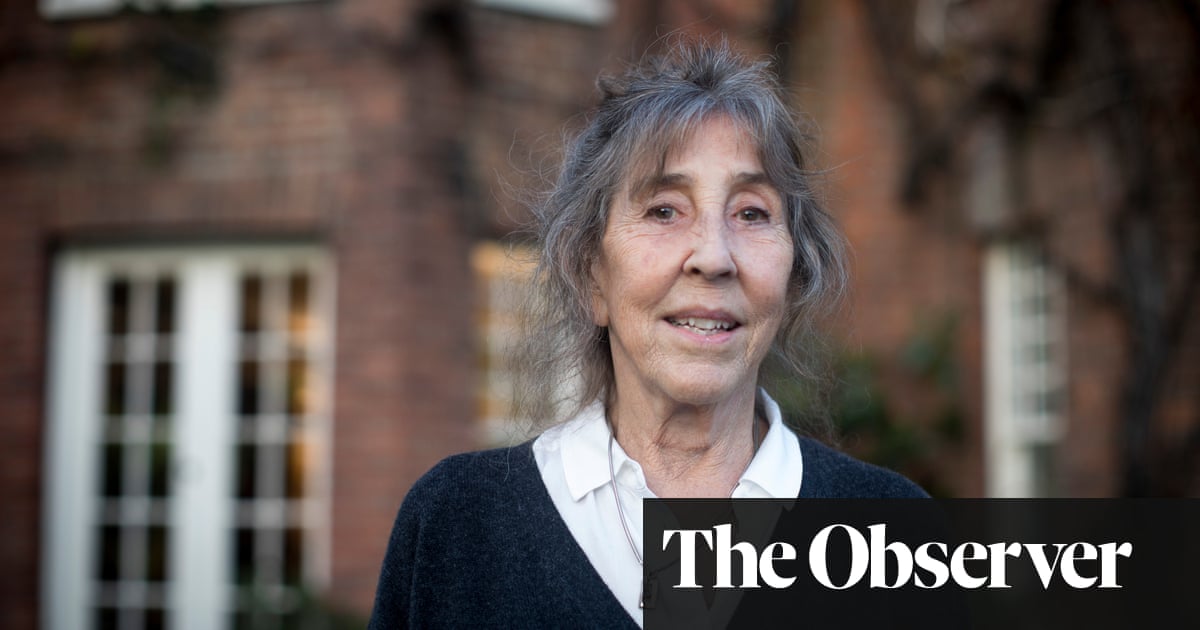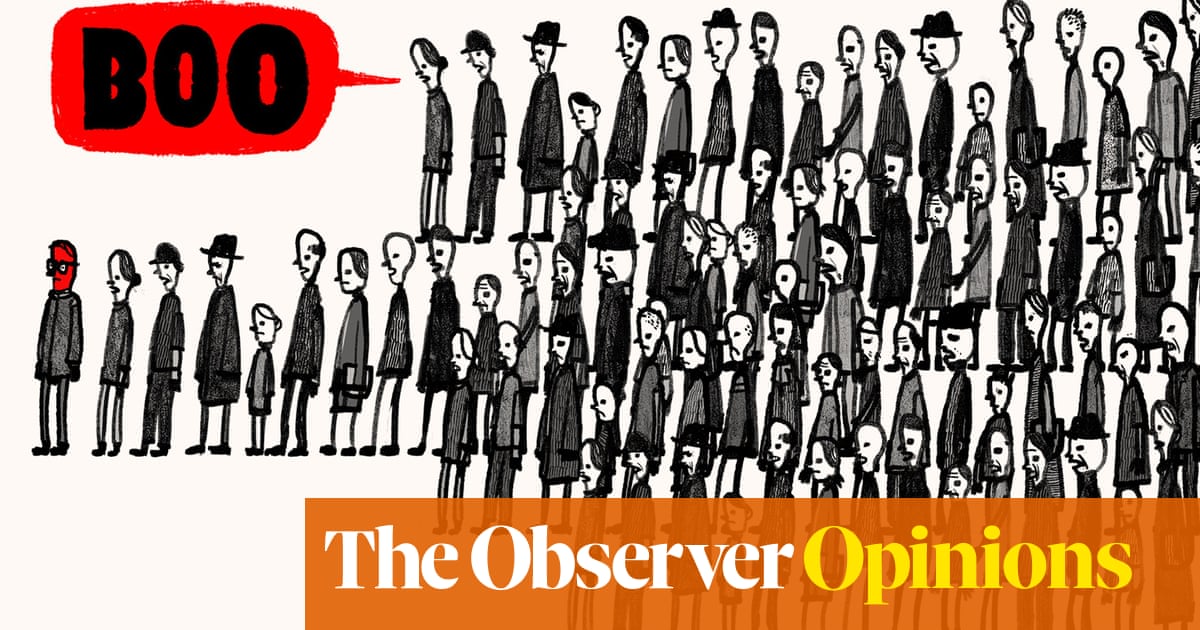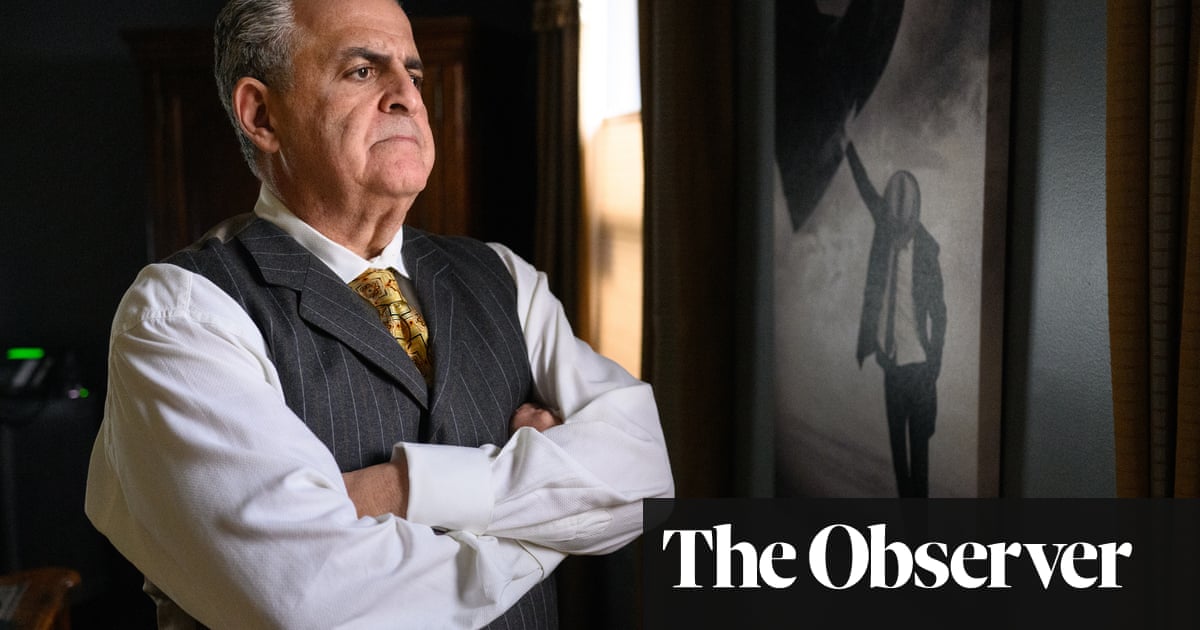There’s an edge of febrile hilarity in the National Theatre rehearsal room. The company of Here We Are, Stephen Sondheim’s final musical, are off-book and getting the first act on its feet. But hitting your cues in a show as intricate as this is tough, whoever you are.
Jane Krakowski fluffs an entrance and tries not to corpse. Martha Plimpton raises a glass a second after everyone else, and a cast-mate blows a raspberry from the sidelines. Jesse Tyler Ferguson is convinced it’s not him who is a beat off. “Do it exactly like Rory does,” suggests director Joe Mantello, and Rory Kinnear responds mock-haughtily: “That’s just a general note.”
Sondheim’s songs can be notoriously tricky to perform. Ferguson, best known for his role as Mitchell in the sitcom Modern Family, found the New York premiere of this work “hypnotic” when he saw it. “And now I realise they spent weeks just learning how to speak these things, and how hard that is.” Combining the verbal rhythmic patterns with the show’s ever-moving choreography is, says Mantello, like patting your head while rubbing your stomach.
The good news: after three weeks it is already very funny. Denis O’Hare – he and Tracie Bennett return from the original production – is nailing his scene. Even with 129 performances in the bank, he is still making his director laugh with fresh takes on a desperate-to-please waiter. At the back of the room, awaiting his entrance, a dead chef lies on a trolley, suitably garnished.
When Here We Are opened off-Broadway in October 2023 it was the hottest ticket in town (not unlike Mantello’s 2004 Assassins, which won a Tony). A collaboration between Sondheim, Mantello and writer David Ives, it had been in development for seven years when Sondheim died, aged 91, and was completed posthumously. Ferguson and Krakowski both remember watching from the audience feeling wildly jealous of the participants, so being asked to join the show for its London debut was a dream. “And on top of that,” says Ferguson, “it’s at the National Theatre, which is something everyone dreams of doing, certainly as an American. I feel very, very fancy.”

A satirical amalgam of two of Luis Buñuel’s surrealist films, The Discreet Charm of the Bourgeoisie and The Exterminating Angel, the show is about a group of wealthy friends who head out for brunch, only to find themselves caught up in a sequence of absurd situations. “I’ve sort of taken my lead from Buñuel, who said the only explanation is there’s no explanation,” says Mantello. When it starts to snow in the middle of the room, you don’t ask why: “It’s magical.”
The characters are symbols of late-capitalist excess – an immoral industrialist, a philandering ambassador, a celebrity plastic surgeon – but their bond of friendship is real. “The secret is, you cast really charming actors,” says Mantello. “You have such affection for these faces when they walk on stage, and maybe just as you start to run out of patience, so does the show.”
The music famously runs out before the end, early in the second half. “Sondheim makes people crazy in all kinds of interesting and different ways,” says Ives. “And social media went crazy over whether this show should even go on. Should Mozart’s Requiem not be heard because Süssmayr had to finish some of the writing? Should Lulu by Alban Berg, one of the greatest operas ever written, not go on because Berg died without finishing the third act? I don’t think so.”
It needed Mantello’s vision to stage such a technically tricky show, says Ives. “He is a genius at composition. It’s like watching a classical painting, the way they move around.” The last time he felt so fraught before an opening night, he adds, was when he wrote Venus in Fur, and that was based on a pornographic, sadomasochistic novel. “Joe and I just did not know what people were going to make of this,” he says.
Instead of opening on Broadway, they mounted the production at The Shed, a 1,200-seater cultural centre in Hudson Yards. “We tried to find a space to fit the oddness of this piece.” The New York Times, which had questioned the play’s readiness to be seen, pivoted after opening night: “cool and impossibly chic”, it was “a worthy and loving farewell”.
“People realised that we weren’t there to somehow traduce a Bible or slander Sondheim,” says Ives. “We were there to show people what he had done. And behold, it was good!”

Krakowski’s long musical theatre CV includes a first meeting with “Mr Sondheim” when she was 14, playing Fredericka in a production of A Little Night Music. She still remembers the precision of his notes: “You never had to ask him a follow-up question.” Krakowski’s family adored musical theatre – her mother was a drama teacher, her father gave them Sondheim librettos to study on car trips. At 24, she was performing in the first Broadway revival of Company, terrified by the responsibility of holding the alto line. “And now,” jokes 56-year-old Krakowski, “aged 29 …”
Ferguson grew up in New Mexico watching the Tony awards and wearing out hard-to-find videotapes of Sweeney Todd and Into the Woods. He remembers missing out on the part of Jack in Into the Woods at the Albuquerque Civic Light Opera, “and bawling, crying so hard because I really was right for the role. I still am.” Krakowski shakes her head: “Let it go, Jesse.”
The only time Ferguson met Sondheim was backstage after a production of Merrily We Roll Along starring Lin-Manuel Miranda and Sutton Foster. “At this point in my career I had met some very, very famous people, but nothing compared to this man who meant so much to me from such an early age.” Intimidated and overwhelmed, all he could say was: “Good job.” He looks at us with a hangdog expression. “Those are the only two words I ever spoke to Stephen Sondheim.”
The composer’s loss still felt fresh during the New York production. “I found that very, very moving, that we actually hear the music stop,” says Krakowski, tearing up at the memory. “And David Hyde Pierce did this very subtle thing,” adds Mantello,” where he just looked up for a second, and it was like bringing him into the room. You don’t want it to get sentimental or maudlin or self-conscious, but it was just a breath to say, ‘You were here.’”

Mantello’s inventive staging – including restaurant sets that drop from the ceiling – is being faithfully recreated for the Lyttelton at the NT. The cast, meanwhile, are finding new gags. We watch as Plimpton adds a hint of dominatrix to one character – “That’s something she brought to the table,” says Mantello. And this time around, the show’s end-of-the-world undertones may hit even harder.
“Politically, we’re in a very different place,” says Ferguson, “where a lot of those fears – not for everyone, but for many people – are here. Some of it is going to make jokes funnier, and some of it is going to make stuff more poignant. There are lines that I cannot believe have been in this script for three years.” One line about Teslas has taken on an entirely new meaning.
We discuss Thomas Ostermeier’s recent production of The Seagull, which questioned the value of theatre and literature when you’re faced with apocalypse. “Being a closeted gay kid in Albuquerque, I went to art to heal me and fill me with purpose,” says Ferguson. “Now I’m a father with two kids, and I’m looking at the world that’s being created around them. And what I do to feel like I can protect them is take them to experience art. So if you ask me what are we even doing here – I’m surviving. You know, this is exactly where I should be right now.”
Mantello says one of the reasons he’s excited to bring the show to the UK is that he feels British audiences are more inclined to dissect shows in the aftermath. “I’m making a broad generalisation here, but the idea of the play as the beginning of a conversation – that you take it into the bar next door, that you take what you’ve just experienced and sift through it – happens less in America than you’d think.”
How long will it take for this play to become part of the Sondheim canon? “Well, it’s in the canon now,” Ives points out. “And you know, how many of his shows were actually well received? All those we think of as classics lasted a week or two. He loved to say to me, ‘It never made any money.’ And as Mantello says, it takes time for people to catch up to him. But we’re just so proud of it, so, here we are.”

 6 hours ago
4
6 hours ago
4














